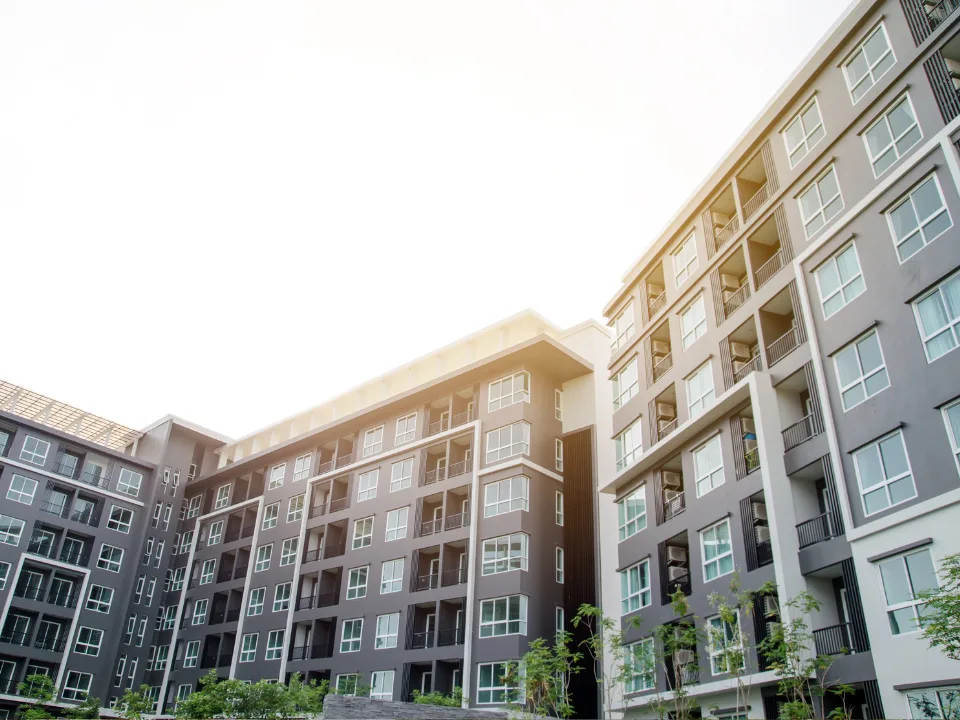DFW Leads the Nation in Vacant Land
Dallas has 90,739 vacant acres and Fort Worth follows with 74,835, and while some view this as stagnation, Dallas sees it as a chance for new development in the thriving North Texas area.
Together with
Good morning. Dallas tops the country in commercial property deals with the most undeveloped land. Defaults and vacancies are on the rise for Class A offices. Meanwhile, M&A activity is on the rise among CRE firms looking to stay competitive in a rapidly changing landscape.
Today's edition is brought to you by AirGarage, the end-to-end solution for parking lot owners to boost their revenue and reduce operating expenses.
📬 Want to share the CRE Daily? Click here to forward this email.
CLEAR WINNER
Texas Leads the US in Undeveloped Land, Buildable Space

Everything’s bigger in Texas, including the amount of undeveloped land across the state. CommercialCafe analyzed construction activity among 20 of the most populous urban centers to determine what we already knew—Texas has way more room to grow.
Southern sprawl: Unsurprisingly, the majority of the top 20 cities with the most vacant land are in the South and Southwest, with Texas coming out on top as the clear winner. With the exception of Phoenix, AZ (which landed in 3rd place on the list) the top 5 U.S. cities with the most vacant land were all in the Lone Star State, with Dallas leading the charge at 90,739 acres.

Next in line: Following closely in 2nd was Fort Worth, with 74,835 acres of vacant land ready for industrial development. Fort Worth already has 22 MSF of industrial space in its growing pipeline. In 3rd place, Phoenix’s undeveloped land is mostly government-owned. The Phoenix City Council has plans to use some of the land for affordable housing in an effort to create 50,000 homes by 2030.
Rounding it out: San Antonio and Houston round out the top 5. Both cities have seen strong construction activity since 2012. Houston added the most industrial and office space, outranking even NYC, as well as the second-largest number of new housing units at 76,543. Meanwhile, San Antonio’s decade-long focus on warehousing and industrial space development seems to be holding steady.

➥ THE TAKEAWAY
Zoom out: The last decade has been a fight for growth and talent in the South as cities tried anything they could to entice tech giants to relocate by easing zoning restrictions, offering tax rebates, and reducing building costs. With rapid growth and an ever-changing landscape, many of the fastest-growing cities in the U.S. have yet to fully address their ongoing housing shortages. The hope is that cheaper vacant land will encourage developers to address these issues and build more affordable housing quickly.
TOGETHER WITH AIRGARAGE
Are Legacy Parking Operations Hurting Your Bottomline?
Increase your property's net operating income with AirGarage’s full service parking management.
Legacy parking companies rely on manual labor and expensive third party hardware & software products to manage their facilities. This increases their operating expenses and hurts property owners' bottom line.
AirGarage is a vertically integrated parking management and technology solution that maximizes your income by increasing traffic, optimizing revenue per vehicle, and decreasing operating expenses.
The average property owner that switches to AirGarage from a legacy parking operator sees a 23% NOI increase in the first year.
Talk to AirGarage today and let us show you how we can increase your NOI with a custom proposal for your parking facility.
🌐 Around the Web
📖 Read about the impact volatility is having on real estate interval fund redemption rates and what may be in store going forward.
🖥️ Watch as CNBC’s Diana Olick discusses the impacts of the regional banking crisis on the office sector.
🎧 Listen to this episode of The Real Deal’s Deconstruct about how past financial crises can inform how borrowers, banks, and policymakers handle this downturn.
NO PAIN, NO GAIN
High-End Office Buildings Are Finally Feeling The Pain, Too

Photo Illustration by The Real Deal with Getty
Rising interest rates and remote work are causing distress for high-end office buildings, with defaults and vacancies on the rise.
Under pressure: During the pandemic, class A, centrally located, best-in-class buildings fared far better than the rest in terms of vacancy rates and values. But according to Moody’s, Class A office space leases fell in Q4 for the first time since 2021, with a number of owners recently defaulting on their mortgages. Recent data indicates high-end buildings aren’t as immune to defaults as we once thought.
Attractive amenities: Adding amenities such as spas, gyms, and restaurants helped many office landlords attract quality tenants. Manhattan’s One Vanderbilt was even able to raise rents with this strategy. But if Big Tech’s departure from catered lunches and Ping Pong tables is any indicator, that’s an old game that fewer tenants care about these days, since they still won’t be in the office eight hours a day, five days a week.

Recent defaults: A prime example is 777 South Figueroa St. in downtown LA, home to financial companies and law firms with offices featuring 30-foot ceilings, rose-marble-covered walls, a landscaped plaza, valet parking, and any concierge service you can think of. The owner, Brookfield (BN), recently defaulted on more than $750M in debt backing the building and another LA office tower. PIMCO also recently defaulted on an office portfolio with buildings in NY and San Francisco/.
➥ THE TAKEAWAY
Drizzly forecast: Office may well be under pressure for the rest of the year due to a myriad of conspiring factors. While lenders gave our CRE loans like hotcakes during the pandemic recovery, demand is still not where it used to be. Big Tech cost-cutting has also dampened office enthusiasm. Long-term leases are set to expire for many tenants who are fearful of a recession, and who are jumping at the chance to reduce costs. It’s a sad state of affairs for office owners all around.
M&A PAYDAY
CRE Firms Look to M&A Activity to Stay Competitive
M&A activity is on the rise for large and small CRE firms alike, highlighting the desperate need to stay competitive during these trying times.
Recent acquisitions: CBRE recently acquired Integra Realty Resources, a CRE valuation, counseling, and advisory firm. KLNB acquired Edge Commercial Real Estate, expanding its footprint by 20% and increasing its tenant base, allowing it to enter the multifamily market. Divaris Group acquired The McGarey Group, which will continue to perform leasing and advisory services for mixed-use properties. Finally, SSH Real Estate acquired long-time client Advantage Building & Facilities to expand its property management business.
Fierce competition: In the wake of economic uncertainty and rising interest rates, CRE firms need to find other ways to stay competitive. "With transaction volume down the last couple of quarters mainly due to interest rate hikes, there's more time now for brokerage firms to have conversations around merging or being acquired, so I think there will be a number of these types of transactions in 2023 and 2024,” said Doug Banerjee, Senior Managing Director at Greysteel.
Getting creative: With rising interest rates comes lower valuations, so companies need to be creative in structuring deals during this challenging time. While real estate is getting more challenging to finance, firms are looking to nontraditional players, such as private debt to fill the gap. Many of the bigger firms have a lot of liquidity on their balance sheets right now, allowing them to make big acquisitions with little to no debt. “Smaller firms will need the additional liquidity and resources that larger firms can provide, and with values being down, there will be opportunities for deals to be made,” added Bannerjee.
➥ THE TAKEAWAY
No time to wait: The expectation is that national brokerages will continue leading CRE M&A activity to firm up their position, scale up existing businesses, and expand into new markets. Who are their acquisition targets? Companies with recurring revenue streams, such as property and facilities management and valuation companies. One thing is clear—firms that don’t look like they can stay competitive by scaling their size, talent, or product mix could be left in the dust if they don’t get acquired soon.
📰 Daily Picks
-
Uphill Battle: Office owners are facing an uphill battle over the next 3 years as loans for 17% of office stock totaling over 9,500 buildings will mature.
-
Investing in innovation: Semiconductor manufacturers have become big contributors to real estate development thanks in part to the $280B CHIPS and Science Act.
-
A country divided: In all 12 major housing markets west of TX (including Austin), home prices fell in January. But east of CO (excepting Austin), home prices rose YoY.
-
Debt downgrade: Moody’s downgraded Blackstone’s (BX) CMBS debt—47% higher than the value of the portfolio backing it—2 months after a $271M loan went into special servicing.
-
Troubling times: Xander Snyder, Senior CRE economist at First American, warns that CRE is becoming an increasing threat to the economy.
-
Flatiron's TIC troubles: The recent auction of NYC’s iconic Flatiron building brings to light issues a TIC structure presents when owners disagree.
-
Disney disaster: Disney (DIS) plans to cut 7,000 jobs this week in an effort to help its struggling streaming service remain competitive.
💼 Talent Collective
In partnership with Bullpen
This week Bullpen is bringing some interesting new contract positions, including a full-time PropTech role that could be a great fit for someone looking to move from the technical to the operations side.
-
Associate, Land Development
💰 Hourly (Remote) ❗️ SFH and multifamily in Michigan
-
Underwriter, Commercial Lending
💰 Hourly (Remote) ❗️ Underwriting and financial analysis of mixed-use and other property types
-
Investment Operations, PropTech Firm
💰 Full-time (Remote) ❗️ Need expertise in C#, .NET, and SQL plus an interest in PropTech/investment operations
Looking to hire? Connect with Bullpen
📰 Deals & Dealmakers
-
Empire state of mind: Empire Capital is under contract to purchase 529 Fifth Avenue in Manhattan for $105M.
-
Retail expansion: Women’s plus size specialty retailer Torrid plans to open 30–40 stores this year, twice as much as in 2022.
-
Better data: Markerr, a real estate analytics startup, closed a $6.6M Series B round this week to expand its services to owners and investors.
-
Building transformation: Lalezarian Properties bought a Murray Hill office building for $33.5M with the intent to convert the building to residential.
-
Development of the day: Toll Brothers (TOL) purchased 100 acres in AZ for $25M to develop 81 luxury homes at Storyrock in Scottsdale.
-
The meatpacking ‘meta’: Mark and Chan Zuckerberg sign a lease for their biotech research hub in Fulton Market, Chicago’s former meatpacking district.
According to Redfin, the rise in mortgage rates is having less of an affect on people trying to relocate outside their metro (down 3.6% YoY) than those looking to move within their current metro (down 14.4% YoY). Relocating for work, family, or more affordable housing are all reasons higher rates may not deter determined house hunters. Where is everyone migrating to, you ask? It’s no surprise that the Sun Belt is still seeing the biggest influx of home buyers from more expensive metros.
What did you think of today's newsletter? |





















